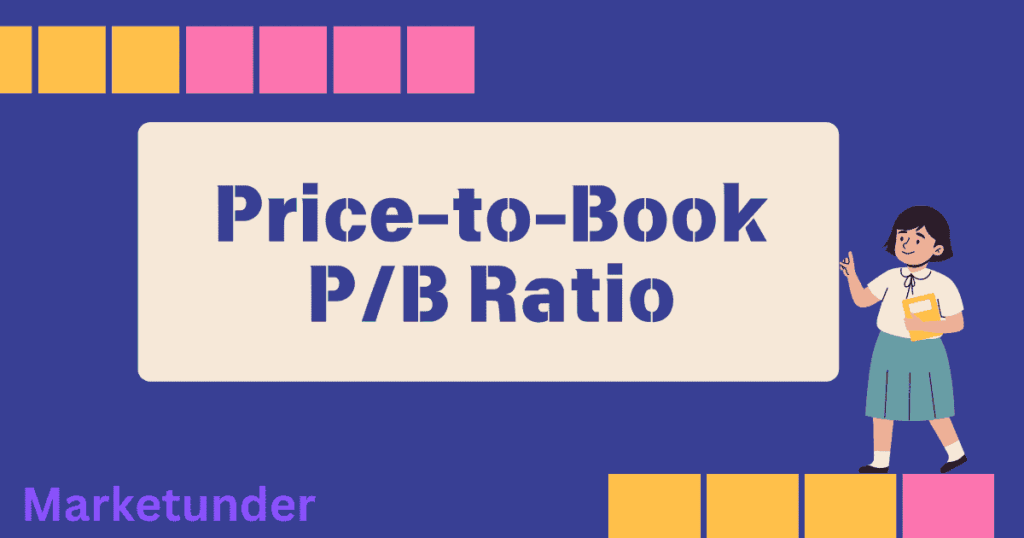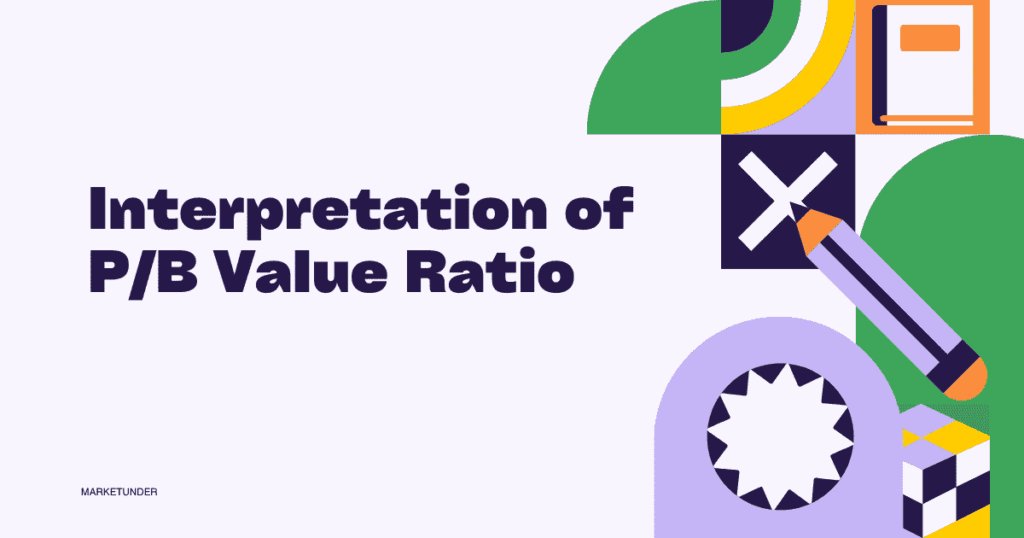Investors rely on various financial metrics to assess whether buying a company’s stocks aligns with their investment goals. One such key metric is the Price-to-Book P/B ratio, also referred to as the Price-Equity Ratio.
What Is the Price-to-Book P/B Ratio?

The Price-to-Book P/B Ratio is a fundamental financial metric that helps investors assess a company’s market valuation in relation to its book value. This ratio provides insights into whether a stock is overvalued, undervalued, or fairly priced based on its net asset worth.
The book value of a company is the net value of its total assets after deducting liabilities. Essentially, it represents the amount shareholders would receive if the company were liquidated. Investors and analysts often use the Price-to-Book P/B ratio as a valuation benchmark, particularly in asset-intensive industries like banking, real estate, and manufacturing.
Formula and Calculation of the Price-to-Book P/B Ratio
The Price-to-Book P/B Ratio is calculated using the following formula:
P/B Ratio = Market Price Per Share
————————————————
Book Value Per Share
Where:
- Market Price per Share = The current stock trading price
- Book Value Per Share (BVPS) =
Total Shareholder’s Equity
——————————————
Total Outstanding Shares
For example, if a company’s stock price is ₹120 and its book value per share is ₹60:
This means investors are paying ₹2 for every ₹1 of the company’s net assets.
How is Price-to-Book Value Ratio Calculated?
To determine a company’s P/B ratio:
- Obtain the total shareholders’ equity from the company’s balance sheet.
- Identify the number of outstanding shares.
- Calculate the book value per share (BVPS) by dividing total equity by the number of shares.
- Find the current market price per share on the stock exchange.
- Use the Price-to-Book P/B formula to compute the ratio.
The result allows investors to compare a company’s valuation with its industry peers and historical performance.
Interpretation of P/B Value Ratio

Interpreting the P/B ratio depends on various factors, including the industry, company growth prospects, and financial health:
- P/B < 1: The stock is trading below its book value, possibly indicating undervaluation or financial distress.
- P/B = 1: The market values the company equal to its net asset worth, implying a fair valuation.
- P/B > 1: Investors are paying a premium over book value, suggesting growth potential or possible overvaluation.
What Is a “Good” Price-to-Book P/B Ratio?
The definition of a “good” price to Book P/B ratio varies across industries and economic conditions:
- High price-to-book P/B Ratios (above 3 or 4) are common in sectors with strong intangible assets, such as technology and consumer brands.
- Low price-to-Book P/B Ratios (below 1) often appear in capital-intensive industries like utilities and manufacturing but may also signal financial troubles.
- Moderate Price-to-Book P/B Ratios (between 1 and 3) suggest reasonable valuations when benchmarked against industry peers.
Investors should always analyse a company’s historical P/B ratios and compare them with industry averages before making decisions.
Limitations of Using the Price-to-Book P/B Ratio
While the P/B ratio is a useful valuation tool, it has certain limitations:
- Excludes Intangible Assets: It does not account for brand value, patents, or goodwill, which can be significant for certain businesses.
- Not Always a Sign of Undervaluation: A low P/B ratio may indicate financial instability rather than an investment opportunity.
- Industry-Specific Variability: Asset-light businesses, like software firms, tend to have high P/B ratios, making comparisons across industries ineffective.
- Accounting Differences: Variations in accounting practices can affect book value calculations, leading to inconsistent results.
Price-to-Book P/B Ratio vs. Return on Equity (ROE)

The Price-to-Book P/B Ratio is closely tied to Return on Equity (ROE), which measures a company’s profitability in relation to shareholders’ equity:
- A low P/B ratio with high ROE suggests a potentially undervalued stock with strong earnings efficiency.
- A high P/B ratio with low ROE may indicate an overpriced stock with weak profitability.
- Companies with stable high ROE and reasonable P/B ratios are often attractive investment options.
Conclusion
The Price-to-Book (P/B) Ratio is an essential financial metric for evaluating a company’s valuation relative to its net assets. However, it should be used alongside other key financial indicators like ROE, Price-to-Earnings (P/E) ratio, and industry benchmarks to gain a complete investment perspective. Understanding the limitations of the P/B ratio and considering sector-specific factors will enable investors to make well-informed and strategic stock market decisions.
Frequently Asked Questions (FAQs)
1. Why is the P/B ratio important?
The P/B ratio helps investors assess whether a stock is undervalued or overvalued by comparing its market price to its book value.
2. Can a high P/B ratio be good?
Yes, a high P/B ratio can indicate strong growth prospects, especially in industries where intangible assets play a crucial role.
3. What does a P/B ratio below 1 mean?
A P/B ratio below 1 suggests that the company’s stock is trading below its book value, potentially signaling an undervalued stock or financial issues.
4. Is the P/B ratio useful for all industries?
No, the P/B ratio is more relevant for asset-heavy industries like banking, real estate, and manufacturing. It is less useful for technology and service-based companies with significant intangible assets.
5. How does the P/B ratio compare to the P/E ratio?
While the P/B ratio focuses on asset valuation, the P/E ratio (Price-to-Earnings) assesses profitability. Both should be used together for comprehensive stock analysis.
Disclaimer: The information provided in this article is for informational and educational purposes only and should not be considered financial, investment, or professional advice. While we strive for accuracy, we do not guarantee the completeness or reliability of the content. Always conduct your own research or consult a qualified financial advisor before making any investment decisions. MarketUnder.com and its authors are not responsible for any financial losses or decisions made based on this information.
2 thoughts on “Price-to-Book P/B Ratio-Explained-2025”